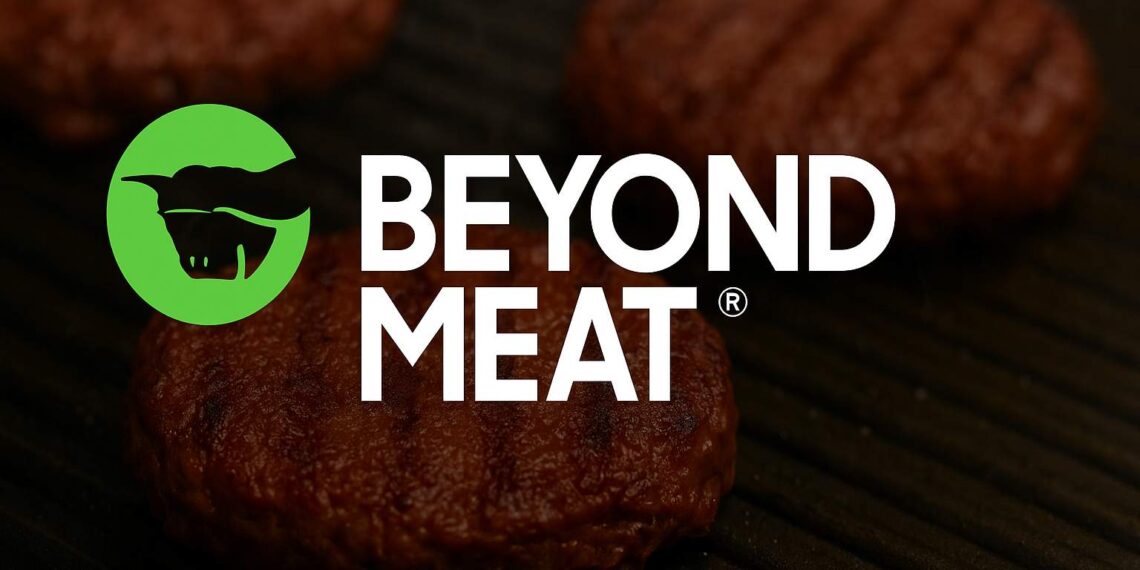Snapshot (today)
Beyond Meat is trading well below $1 intraday with heavy volume and a very wide high/low range—textbook stress-tape behavior. When a stock slips into sub-$1 territory, price action is dominated by liquidity pockets, options/convertible hedging, and delisting anxiety more than by incremental fundamentals.
What’s likely driving today’s move
1) Positioning & liquidity, not just headlines.
At penny-stock levels, order books are thin and small imbalances produce large percentage swings. Breaks below round numbers (like $1.00) can trigger stop-losses and systematic selling.
2) Capital-structure overhang.
Names in this zone usually face a cocktail of cash burn concerns, near-term maturities, and potential equity raises or reverse-split scenarios. Even rumor or speculation can move price violently.
3) Category fatigue.
US retail demand for plant-based meat has been choppy the last few years. That keeps the narrative fragile: any hint of slower velocities, pricing pushback, or retailer resets weighs on sentiment.
4) Competitive pressure.
Rivals (legacy protein, private label, and alt-protein peers) continue to price aggressively. When consumers trade down, premium plant-based SKUs often feel it first.
The medium-term investment case (why it still has a path forward)
Brand equity still matters.
Despite volatility, Beyond Meat remains one of the best-known brands in the category. Brand salience helps when retailer sets shrink: buyers often keep one or two leaders through resets.
Foodservice can bridge the gap.
Even if US retail is lumpy, foodservice placements (QSR pilots, campus dining, corporate catering) can deliver steadier base volumes and introduce products to new consumers at a lower trial barrier.
Reformulation and cost work.
Improving taste/texture, cleaner labels, and recipe costs (protein inputs, oils, binders) can expand the addressable audience and lift gross margins—especially if manufacturing yields and throughput improve.
Portfolio focus beats proliferation.
A tighter SKU mix around proven formats (e.g., burgers, grounds, select sausages/nuggets) can concentrate marketing spend, reduce complexity, and raise shelf productivity—key for retailer support.
International pockets of growth.
Penetration outside the US can be meaningfully lower but growing off a smaller base; targeted partnerships and localized products can outgrow the core market, helping mix and seasonality.
What to watch in the next 1–4 quarters
- Cash runway & capital actions: pace of burn, any refinancing or equity moves, and management’s plan to stay compliant with listing rules.
- Gross margin drivers: input costs, co-man vs. owned production mix, and operational efficiencies.
- Velocity vs. distribution: are units per store per week stabilizing even if doors are flat? Retailers will tolerate fewer SKUs if turns improve.
- Foodservice pipeline: new logos, menu permanence vs. LTOs, and international accounts.
- Pricing & promo: the balance between price points that drive trial without crushing margin.
- Innovation quality: reformulations that measurably improve taste/texture and address ingredient concerns (sodium, processing perception).
Risks (not exhaustive)
- Delisting/reverse split risk if shares remain below compliance levels.
- Further dilution if the company taps equity to extend runway.
- Category headwinds: weaker repeat rates or retailer space reductions.
- Input inflation or supply hiccups that stall margin progress.
- Execution risk in international expansion or foodservice scaling.
Bottom line
Today’s volatility looks primarily flow-driven around a fragile capital-structure narrative. The bull path requires tangible proof on three fronts:
- Runway: credible liquidity plan;
- Unit economics: improving gross margin via reformulation and ops;
- Demand quality: steadier velocities in retail plus durable foodservice wins.
If those show up, the equity can re-rate from distressed levels; if not, price will stay hostage to liquidity and balance-sheet math.
FAQ
Why is sub-$1 such a big deal?
It often triggers automatic selling rules and raises listing-compliance questions, which can accelerate moves even without fresh company news.
Could a reverse split fix things?
It can restore compliance mechanically, but it doesn’t solve fundamentals. Investors will still look for margin and cash-flow progress.
What’s the single most important metric to track?
Gross margin trajectory. It encapsulates pricing power, input costs, and operational execution—and determines how far each dollar of sales extends runway.
Is there still a consumer for plant-based meat?
Yes, but the buyer is more value- and taste-sensitive than the early-adopter wave. Winning now is about better product at the right price, not just novelty.
Disclaimer
This research brief is for informational purposes only and not investment advice. Equities can be volatile and may result in loss of principal. Do your own research and consider consulting a licensed financial advisor. All market data referenced are as of today’s session and may change without notice.










